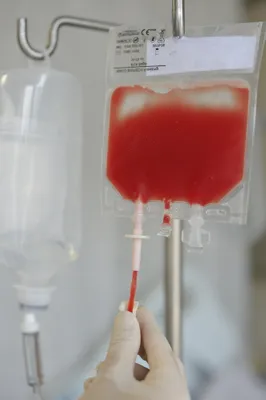You probably think of your skeleton, flesh and muscles as the only essential parts of your body, and you’re mostly right. However, within your bones lies another essential component—marrow.
This flexible tissue inside bones is key to maintaining your immune system, as it is responsible for producing all of your blood cells—the type that transports oxygen, and the type that fights off infections (white blood cells). When the bone marrow fails, it can be a life-saving requirement for a bone marrow donation. Here are seven facts about bone marrow donation for Marrow Awareness Month…
1. There Must be a Proper Match
According to BeTheMatch.org, bone marrow can’t come from just anyone when it’s time for a transplant. While doctors must be aware of your blood type for a blood transfusion, similar rules come into play for a marrow transplant.
The source explains that a donor’s bone marrow type must match the recipient’s human leukocyte antigen (HLA) tissue type. These HLAs are protein “markers” that tell your body which cells are meant to be in your system, and which are potential threats. You can imagine what would happen within your immune system if you introduced the completely wrong marrow type.
2. You May Need to Complete Treatment First
If you need a bone marrow transplant because cancers such as leukemia have shut down the marrow’s functions, you often will have to complete the course of treatment whether it’s radiation or chemotherapy, according to Healthline.com.
This will ensure cancer cells and damaged marrow cells are eradicated before new stem cells (from bone marrow) can be introduced, adds the source. Therefore, before a bone marrow transplant, your immune system could be heavily compromised, and you’ll probably be put in a private room in the hospital as a precaution.
3. Your Own Marrow May be Used
There are actually 2-types of marrow transplants—autologous and allogeneic, according to Healthline.com. Autologous means doctors preserve your healthy stem cells, which are harvested before a procedure such as chemotherapy that will destroy them.
Using your own marrow isn’t always an available option, as it requires healthy marrow, adds the source. Allogeneic transplants, as you may have already guessed, involve donor cells from an eligible match.
4. The Transplant Can Take Days
It’s not quite as simple as taking bone marrow from a donor and inserting it into a patient in a single procedure. The American Cancer Society explains the process has several steps, and isn’t something that’s done in a day.
After the “conditioning treatment” (killing off existing cells), you’ll need a couple of days to rest, according to the society. The new stem cells will be delivered through a central venous catheter. Another drug may have to be administered if the cells were frozen, to reduce the chance of a reaction to preservatives used.
5. There Can Be Infusion Side Effects
Like many medical procedures, there can be some complications. However, the American Cancer Society explains that when it comes to bone marrow transplants, the side effects “are rare and usually mild.”
These reactions (during and following the procedure) can include fever-like symptoms, low blood pressure, or feelings of weakness. These effects can be treated as well, but won’t stop the stem cell transfusion, adds the source.
6. Plan for Recovery Time
Once the cells are put in place, it’s not an instant fix, explains the Canadian Cancer Society. The time after “engraftment” (the procedure of inserting cells into the bloodstream) is important to ensure the procedure was successful with no side effects.
Blood tests can ensure the stem cells have taken properly, but your marrow will take some time to rebuild your immunity. “When this happens, and if there are no complications, recipients may be allowed to go home or move into accommodation close to the transplant centre,” explains the source, adding that patients should remain near a treatment center just in case.
7. Donating Marrow is an Outpatient Procedure
There are 2-types of donation, and they don’t require long hospital stays, according to BeTheMatch.org. One procedure called peripheral blood stem cell (PBSC) is non-surgical, but you must be injected with a special drug for about a week ahead of time to spike the number of cells in your blood to donate.
A bone marrow donation is a surgical procedure, but it’s on an outpatient basis (in most cases) meaning you won’t need to prepare for a hospital stay. Doctors will administer anesthesia during the procedure, so you won’t feel pain, contrary to the popular belief that marrow transplants are excruciating. It doesn’t require enough of your marrow to compromise your own immune system.










